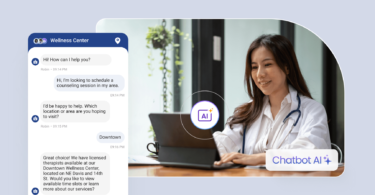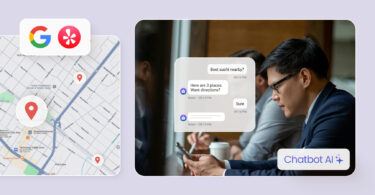(Second post in our 6-part series on Customer Experience gaps, and how best to combat them. If you missed our post on the VoC gap, you can read it here.)
Despite our businesses’ best efforts to manage and enhance customer experience, we’re often subject to gaps between how we’d like things to be and how things actually are. For instance, we’d like to be able to control the messaging channels in which our customers communicate with us, funneling them to our preferred alternatives. Perhaps that’s webchat, or email, or even a phone call to a support rep.
The modern customer has other ideas, and we’re all the better for it. They prefer to talk to businesses on their preferred messaging apps or channels. Sometimes, these are newer channels that a business isn’t quite staffed for nor ready to support. We call this the Messaging Gap, and it’s a big one. Failing to account for the many channels that customers wish to talk to you in means that a business is likely missing out on important feedback and customer sentiment that’s being expressed there, whether that’s Facebook Messenger, Instagram, text messages and countless other examples.
Let’s look at a relevant example for many Birdeye customers. For years, Google business listings that come up in a prospect’s search results had primarily focused on business hours, embedded maps and reviews. When Google added click-to-call and messaging options, however, it became an extremely easy method for prospects to reach out for quick questions and inquiries. We’ve heard all too many stories here at Birdeye of businesses with “nobody home” on the other end of these inquiries, resulting in missed connections, customer frustration, and ultimately, missed revenue.
Customers – not businesses – define messaging strategy
Customers now expect you to be there for them on their preferred channels, and they’re the ones in the messaging driver’s seat. Businesses who wish to compete with the more forward-looking competitors in their fields have found that there’s really no option but to be present on every type of messaging app or channel, from text to chatbots to webchat to Google, Facebook and Apple Messaging; all the way to video chat and beyond.
This isn’t quite as daunting as it might sound. Solutions such as Birdeye’s Messaging allows businesses to talk to their customers via all the aforementioned channels, all in one centralized, easy-to-use dashboard. Why struggle to be constantly present in up to a dozen discrete apps or channels, when you’re easily able to be present in one place, with all of your messages appropriately tagged by source and easy to respond to in one session? No matter where customers are and what they’re using to communicate, users of Birdeye’s Messaging are talking to them through one unified inbox. That’s how we’ve worked to help our customers solve the messaging gap.
Scott Hansen at Extra Space Storage put it best. He told us, with regard to customer interactions, “It’s very different today than even 5 or 10 years ago. The variety of preferences customers have in their interactions has changed. Customers have so many choices in who they do business with. Businesses need to pay attention to all the interaction points available to customers….businesses like Extra Space have to be visible and engaged in all of these channels. It’s a great way to show customers that they are the best option for them today, companies need to be aware of and interact with customers on all of their preferred channels.”

Originally published









